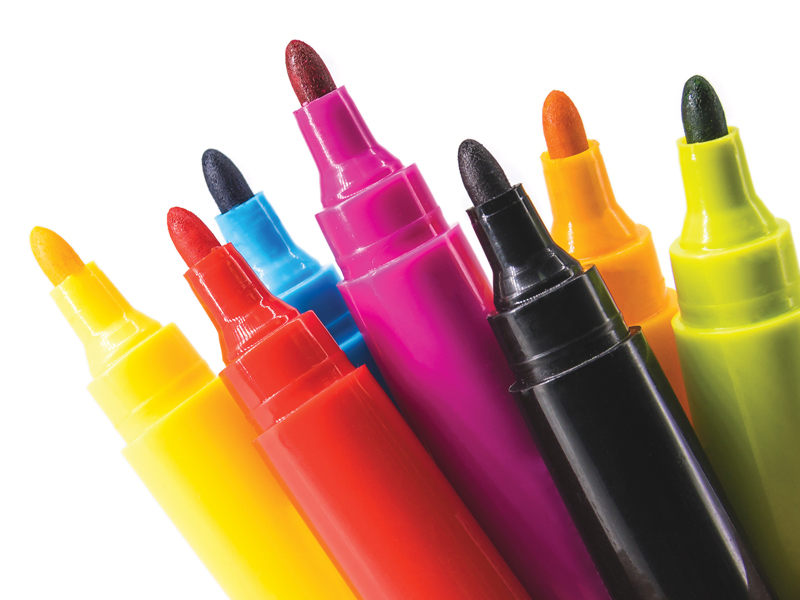How can I best remove black, permanent marker stains from a pair of heavy-duty, brown duck fabric coveralls? Any leads you can give me would be greatly appreciated.
Admittedly, some black marker stains can be very difficult to remove, especially if the spots have been washed in and then dried repeatedly. The best advice I can offer is to buy one of two products from your local laundry supplies distributor – purchase either TarGo or Laundry Wetspo. Either of these chemicals should be able to remove the marker stains. Of course, it’s very difficult to remove such spots if they have set and re-set into the garment, so several applications may be required to get that stains out.
You can use either product as a spotter, or you can incorporate them into the wash cycle. My recommendation is to simply wet the affected area with hot water and apply either product – work it in with your fingers until you see the ink spreading and then repeat the process until you completely remove the spot.
Do you have any tips for removing fabric softener from lint traps?
If the fabric softener is on the lint screens for your dryers, the most effective way to clean off that softener residue is to remove the screens and simply wash them in hot water with a standard detergent. Most lint screens are made of fabric and are detachable, so they are relatively easy to clean.
On the other hand, if that fabric softener in built up in your drainage system, there are only two ways to remove it – either have the lint traps power cleaned or have them rodded out. Softener and other chemicals have a tendency to harden, so those are the two best options for that scenario.
My vinyl tile floor is old and needs to be replaced. I’m considering perhaps ceramic or some other form of decorative tile. What do you think? Are there other options available that you would recommend?
One other great option is to go with a poured resin flooring. This option enables you to be creative with your store, as there are any number of flooring colors and color combinations available. In addition, a poured floor will be less expensive than ceramic tile. Also, it will be safer for your customers and staff – ceramic floors can sometimes get quite slippery when wet; however, with a poured floor, you could add non-slip materials to the color chips within the flooring to make your laundry’s floor relatively slip-resistant.
A seamless poured floor also is easier to keep clean, because there aren’t any grout seams to collect dirt and grime. Plus, with vinyl tile flooring, you occasionally need to wax and re-seal those tiles.
Therefore – when considering cost, safety and maintenance – a poured resin floor very well may be your best option. However, a word of caution: if you decide to install a poured floor, be sure to use a reputable and experienced company to do the job.
I do a considerable amount of drop-off laundry at my store, and I always seem to have a problem removing chewing gum from garments. Can you offer any suggestions for removing it?
There are two ways to deal with this problem. One way is to spot it with a good paint and oil remover. If you use this method, be certain to work it until it dissolves completely and then flush it with hot water. After that, run the item through a standard wash cycle.
The other way to remove gum is to place the item in a freezer until the gum gets rock hard. Once the gum is frozen, it should easily crumble into a powder and simply fall off of the garment.












